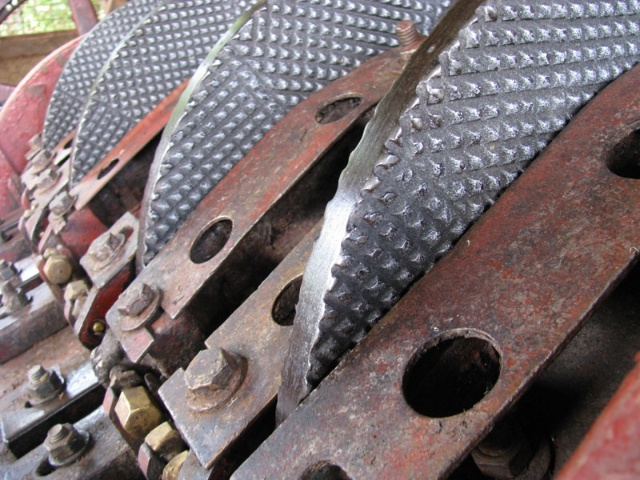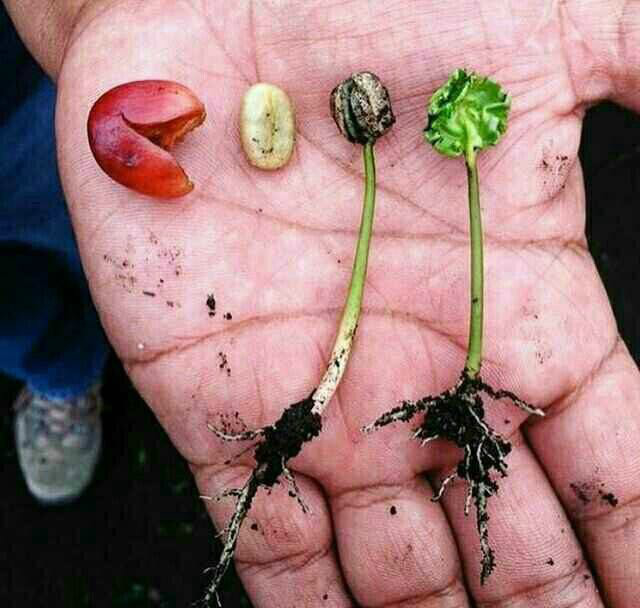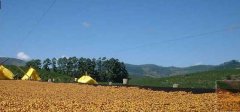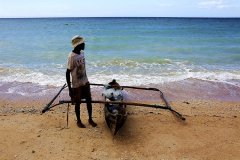Coffee flavor characteristics of Antigua volcanic area Marguerite Coffee Manor is unique
For professional baristas, please follow the coffee workshop (Wechat official account cafe_style)

Antigua coffee
The Antigua Valley of Guatemala has long been the most famous coffee producing area in Guatemala, and the microclimate of the Antigua Valley is known all over the world for providing excellent conditions for growing coffee. The road to fame in this producing area began with excellent coffee, which was discovered by some Japanese coffee traders decades ago. The combination of rich volcanic soil, low humidity, sufficient sunlight and strong temperature difference between day and night have created the personality of coffee in Antigua. The valley consists of three volcanoes: Agua, Acatenango and Fuego. Every once in a while, the Fuego volcano adds fresh and rich ash to the environment. These volcanic ash are rich in minerals and also provide soil growth conditions to help retain moisture to resist the dry climate of Antigua. Like all coffee grown in Guatemala, Antigua coffee grows in the shade of trees, which not only protect coffee from cold nights from December to January, but also create an ecological corridor for wildlife in this subtropical region.
Micro climate information
Climate: the climate in this area is mild, with an average annual temperature of 22 °C. The Antigua Valley is surrounded by mountains and volcanoes to protect it from the north wind.
Height: located at 1500 meters above sea level, producing very hard beans (SHB) quality coffee.
Weather: the rainy season lasts six months from May to October and the dry season from November to April. In the dry season, the temperature is about 14 °C from November to January, while the average temperature from February to April is 24 °C. Such a unique climate creates a special coffee producing area. The average annual rainfall is about 1200-1500 mm.
Soil: volcanic soil mixed with fresh volcanic ash, very rich in minerals and nutrients, is an ideal element for the growth of coffee. This area and valley used to be a lake, so the sediment left behind makes the land fertile and strongly characteristic, affecting the unique quality of coffee.
Planting: most coffee is grown in Arabica bourbon and is grown in the shade of Gravilea trees. Coffee is carefully picked and selected artificially when it is ripe, and then transported to the La Esperanza water washing plant on the outskirts of Antigua.

Coffee treatment: the coffee is carefully treated in the washing field and the coffee beans are separated by a peeling machine. The final pulp is then removed by fermentation and then washed with clean water. The coffee is 75% sun-dried. Carefully dry according to customer requirements and ensure that each bag has a consistent quality, as is the case with every harvest.
Season: the flowering season begins in late April or early May, and the harvest period is from December to March. Such high-quality raw coffee beans are usually available in mid-January.
Introduction to Coffee
Manor: Margaret Coffee
Producing area: Antigua volcano producing area
Planting altitude: 1500-1700m
Treatment method: washing treatment method
Varieties: bourbon, Kaddura, Kaduai
Mesh size: 15 to 19-97.8%
Water content: 9.1%
Annual rainfall: 800-1200mm
Soil: volcanic soil and pumice
Shade tree: Gravilea
Flavor: citrus lemon tea-like freshness, pistachio, lemon grass, caramel sweet, peach and plum bright acid value, tail rhyme with classic dark chocolate, long finish
Important Notice :
前街咖啡 FrontStreet Coffee has moved to new addredd:
FrontStreet Coffee Address: 315,Donghua East Road,GuangZhou
Tel:020 38364473
- Prev

Is there any good boutique coffee manor in New Oriental Coffee producing area, one of the boutique producing areas in Guatemala?
For the exchange of professional baristas, please pay attention to the coffee workshop (Wechat official account cafe_style) New Oriental producing area, which welcomes the first dawn of the country every day, is the easternmost producing area of Guatemala. New Oriental is one of the seven major producing areas of fine coffee defined by the Guatemalan Coffee Association (Anacafe) in 1980. This range of production is defined as Barberena, Jutiapa and
- Next

Introduction to Coffee Manor, which has won the Champion for 12 years-Valma Manor, Centennial Manor
Exchange of professional baristas Please follow Coffee Workshop (official account Wechat cafe_style) the Manor Valma is located in the Koban region, a perfect producing area with steep hills, verdant rain forests and charming floral scent, including an unspoiled natural environment and a unique micro climate. The contrast between the high-altitude mountains and the high-humidity tropical rain forest makes the place always surrounded by dense clouds.
Related
- Does Rose Summer choose Blue, Green or Red? Detailed explanation of Rose Summer Coffee plots and Classification in Panamanian Jade Manor
- What is the difference between the origin, producing area, processing plant, cooperative and manor of coffee beans?
- How fine does the espresso powder fit? how to grind the espresso?
- Sca coffee roasting degree color card coffee roasting degree 8 roasting color values what do you mean?
- The practice of lattes: how to make lattes at home
- Introduction to Indonesian Fine Coffee beans-- Java Coffee producing area of Indonesian Arabica Coffee
- How much will the flavor of light and medium roasted rose summer be expressed? What baking level is rose summer suitable for?
- Introduction to the characteristics of washing, sun-drying or wet-planing coffee commonly used in Mantenin, Indonesia
- Price characteristics of Arabica Coffee Bean Starbucks introduction to Manning Coffee Bean Taste producing area Variety Manor
- What is the authentic Yega flavor? What are the flavor characteristics of the really excellent Yejasuffi coffee beans?

